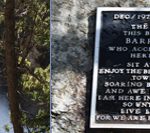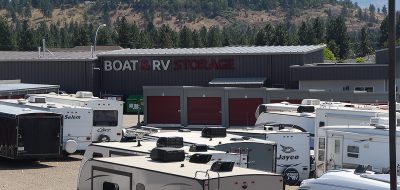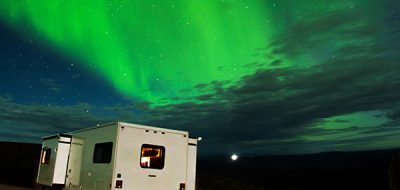 Last week’s Lug_Nut tip, we looked at managing speed while descending steep grades in mountainous areas. Now let’s look at some of the other hazards that you might encounter when operating in high elevations and mountainous terrain.
Last week’s Lug_Nut tip, we looked at managing speed while descending steep grades in mountainous areas. Now let’s look at some of the other hazards that you might encounter when operating in high elevations and mountainous terrain.
Road Surface Ice Patches: Temperatures drop as elevation increases at a rate of about 3.56 degrees F. per thousand feet. This is known as the “normal lapse rate”, or temperature to altitude ratio. While this is the usual ratio it can vary. A steeper lapse rate can be experienced when the weather becomes unstable and the ratio may exceed 5 or more degrees F. for every one thousand feet of elevation. Likewise another phenomena is possible where the lapse rate is very low, nil or even a slight increase may be found. This may be an inversion, where warmer air is forced aloft. But never the less, you are far more likely to encounter a normal lapse rate, hence the word “normal”. So, on a 50 F., day driving over a 5,000 ft. mountain pass, freezing temperatures are quite probable. This can result in icy conditions if precipitation is present. But, even on a sunny day ice can form from water running down from the mountains above, particularly in shaded areas.
Wildlife on the Road: While many lower elevation roads present this problem, many mountain roadways have an additional animal, the mountain goat that often wanders on the highway. Rugged terrain can also make the road edge an appealing passage in some circumstances which may result in an increase of roadway wildlife traffic. Combine this with the twisty roads and poor forward roadway view, a shorter warning of wildlife is to be expected.

Rock Fall Warning: While a rock slide is highly unlikely, the possibility of encountering some small rock pieces on the roadway can be very real, particularly after a heavy rain fall. Generally these rock fragments are jagged and can damage or destroy a tire or vehicle. Reducing speed when such warning signs are posted can increase your maneuvering and stopping ability. We have all seen the yellow warning signs, but it is surprising how little attention they are given by most drivers.
Precipitation on an Otherwise Clear Day: When operating at higher altitudes in mountain ranges that are snow capped, precipitation can be encountered even on what looks like a clear day. This can happen when humid air drifts across the snow caps. The frozen ice and snow reduces the air temperature to, or below, the dew point. At this temperature some cloud formation will appear and snow or fine rain may fall.
Reduced Visibility Possible: Quite often the clouds are lower than the mountains are high. If the roadway rises up to, and through, the cloud base, vision may be reduced to near zero. Slow down and observe caution as you would driving in fog.
Shear Road Edges: Unlike most roadways found in the lowlands, mountain roads occasionally have no shoulders or guardrails in some sections. These require special care and attention. Wondering off the road in these areas can have disastrous results.
Engine or Transmission Overheat: Climbing steep grades takes horse power and torque, this causes the drivetrain to heat up. To keep your engine and tranny running cooler, climb grades in a manually selected gear. This then will allow partial throttle climbs without the automatic up-shift. Operating your engine at higher RPM will allow the cooling package to run more efficiently during hard pulls.
Fuel and Services: Generally you don’t see fuel and service stations in the mountains. So, make sure you have ample fuel and that your fluid levels are all topped up.
Affects of High Altitude: Generally there is little affect to most people when exposed to 5,000 feet or so. But there are far higher elevations in the U.S. that you can drive to, about 12,000 feet or more. If you are planning a trip that may take you to these extreme elevations, it would be wise to look into altitude health affects for yourself and those travelling with you. If you plan to camp in the mountains you should be aware of the reduced output that your generator can supply. For each 1,000 feet of elevation above sea level, a 3.5% drop in output will be experienced. So, for example, if you have a 7,000 watt unit, you will only have about 5,500 watts at 6,000 feet or 4,500 watts at 10,000.
Well, those are just some of the challenges you may face when travelling through mountainous regions. The geographic beauty, however, is well worth it. If you have never ventured on these roads in the sky, you may want to give it a try. Just drive safe.
With Some Hazardous Thoughts – Lug_Nut – Peter Mercer






Pingback: lainaa yrityksen perustamiseen
Lug_Nut
Jerry, I just travelled through 7,000 feet and stayed for a couple of days. I observed no apparent pressure change worth correcting. I would say in general, no there is no need to reduce tire pressure. This should only be considered if you were to be staying at that elevation for an extended time. You may however, experience other issues with household items like Tasimo coffee packs. Mine nearly burst with the lack of outside pressure.
Jerry
So the gen power is reduced at high alt levels….interesting, also should I reduce my tire pressure? I read in another post that the air pressure increases as the air gets thinner? Is this true and is it bad enough to warrant relieving some of the air in the tires?
Randell
James, where did your wife find the 3500w sku 66100 inverter?
I am looking for one like it!
Lug_Nut
James, A 3500 watt is a good size inverter. A 7000 is huge. If it’s a 3500 watt, or even anything above a 1500, you are going to need more than one battery. I don’t know what you would like to operate with it, but two batteries would be minimum, far better four. If you have the room to install some extra battery power you will love having an inverter. Thanks for posting.
James
ANY THOUGHTS
James
Sorry about changing subject but do you have any experience with a power inverter. We have a small motorhome with l battery. My wife just purchased me one for father,s It’s a 3500 W- 7000W SKU66100 . Would like to use it boondocking.
Lug_Nut
Jerry Gonsiewski, Great point, thanks for sharing your experioence with us and for your valued input.
Lug_Nut
Art, Yes, a little back-seat driving can be the background that may accompany the trip. Thanks for throwing that one in and for your input.
Jerry Gonsiewski
Ran out of fuel. Driving to Oregon coast. We have a 1/4 tank and plan on filling in 20 miles when we get to a ‘town’. Traffic stops. Moves forward 300 yards at a time. We approach the crest of a mountain just as it bears left and we have to stop. Engine stalls and won’t start. All the fuel ran to one corner of the tank and the pickup couldn’t get it! Took 10 gallons to restart. Don’t drive mountains with less than 1/2 tank!! Who woulda thunk!
Art
You left out one very important item……………………..the wife/significant other yelling and putting permanent groves in the arm rest……slow down, not so close to the edge, etc,etc
AA 🙂
Lug_Nut
butterbean carpenter, Glad to hear you found this of interest. Thank you for taking the time to post.
butterbean carpenter
Howdy LN,
Thanx for the info… I’ve never gotten that tall so it was info I needed…